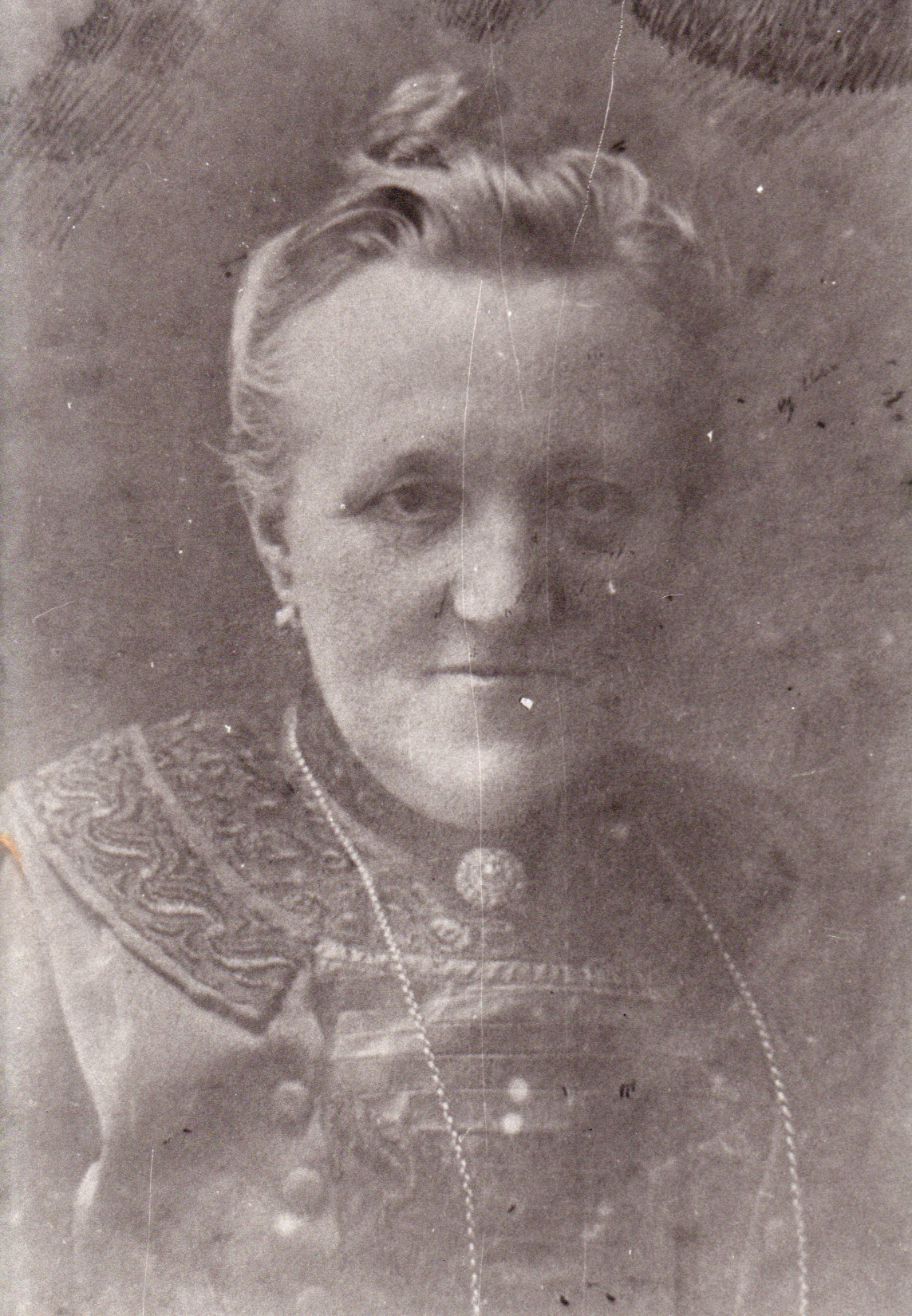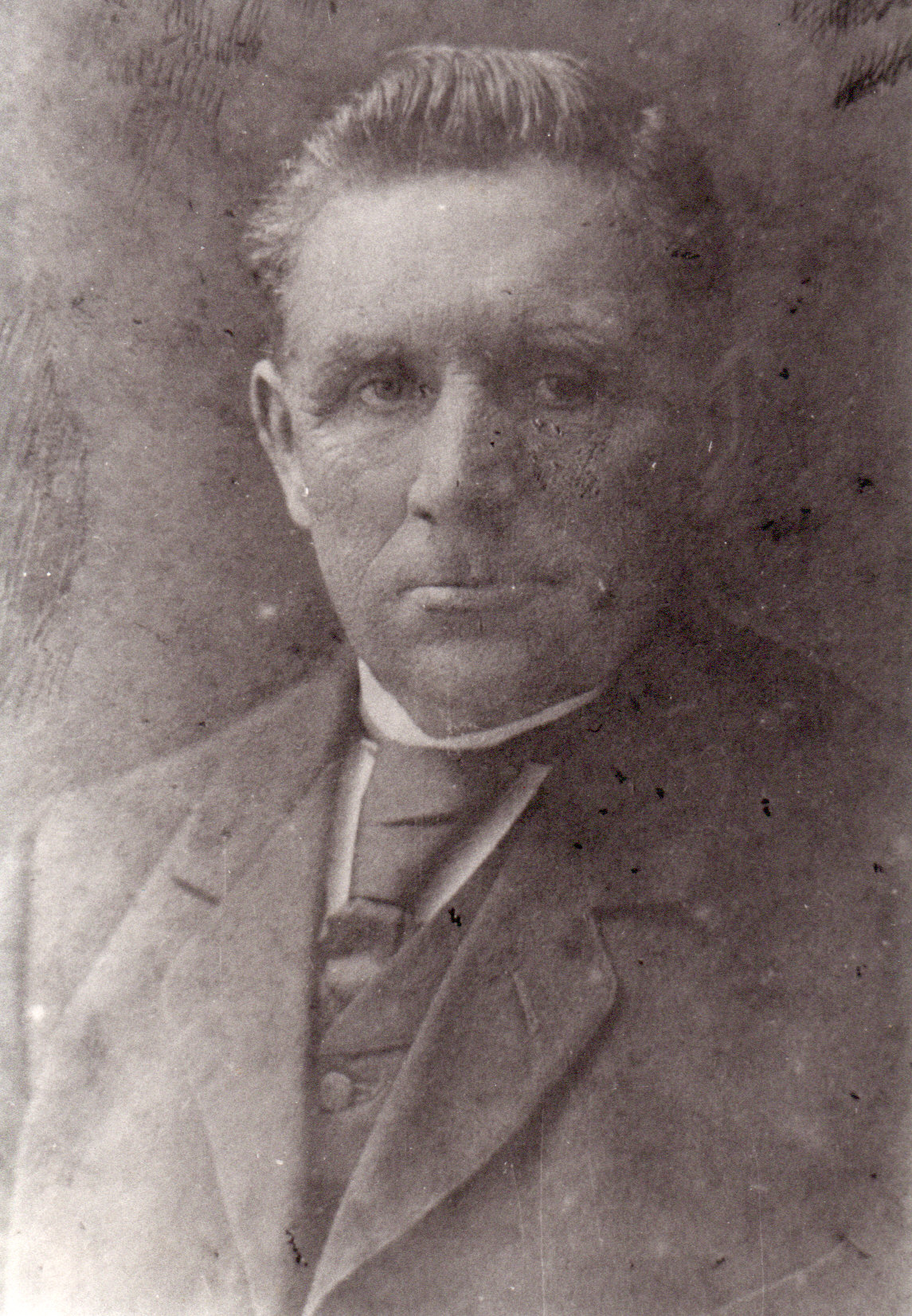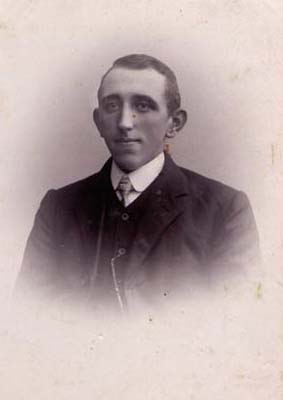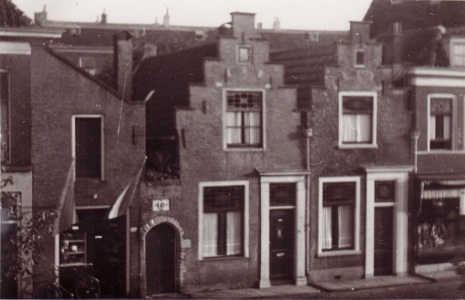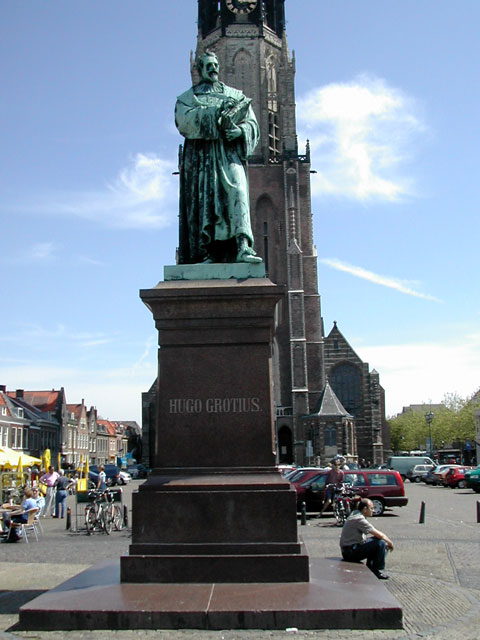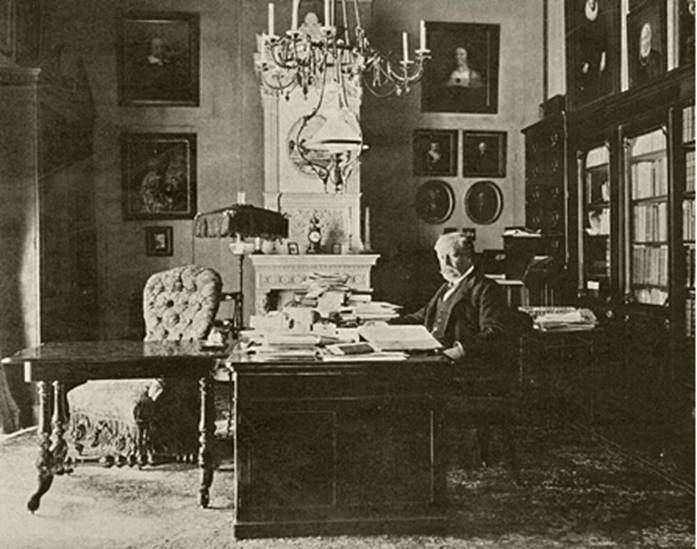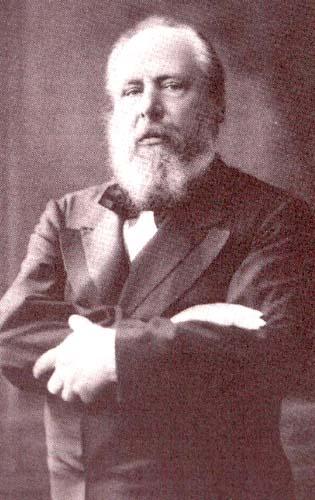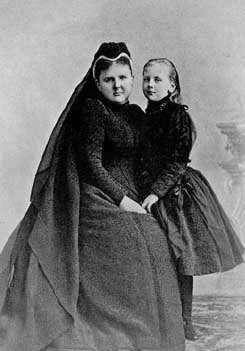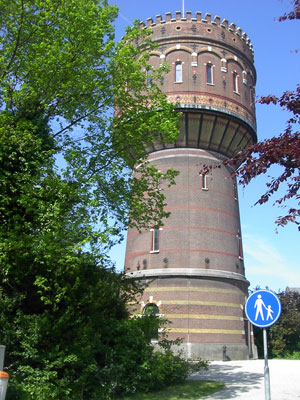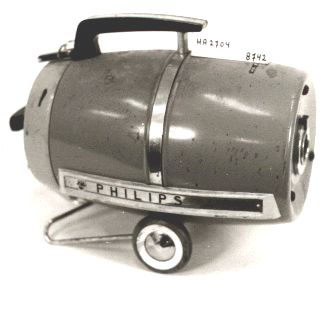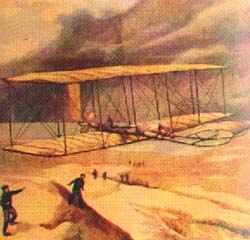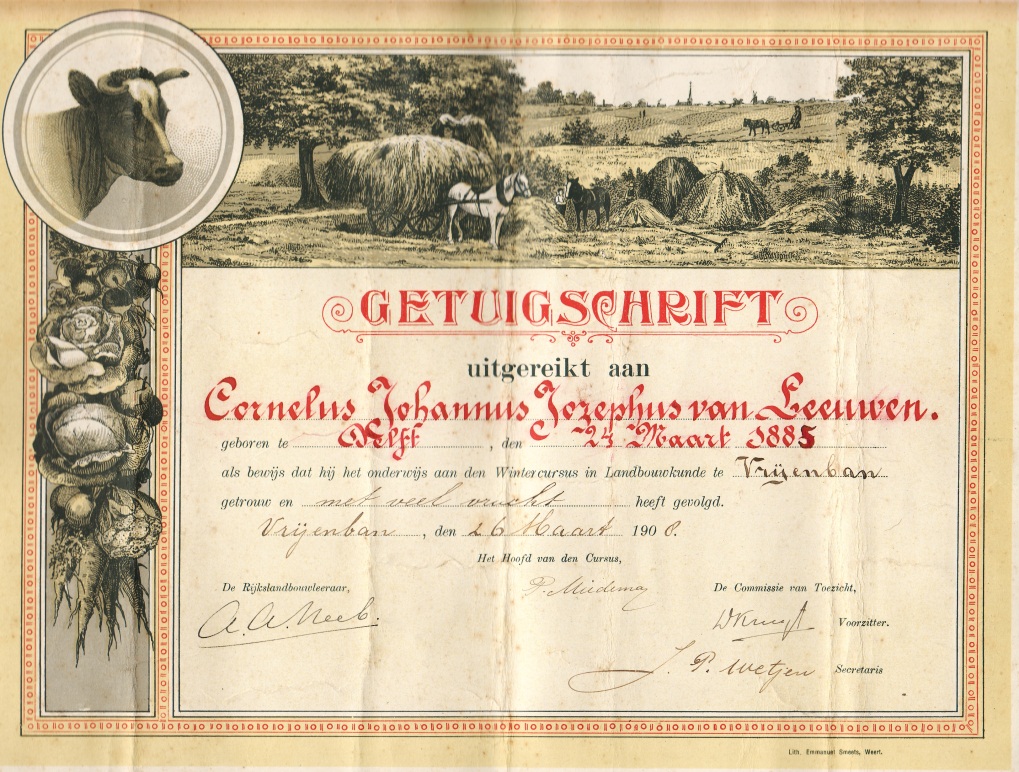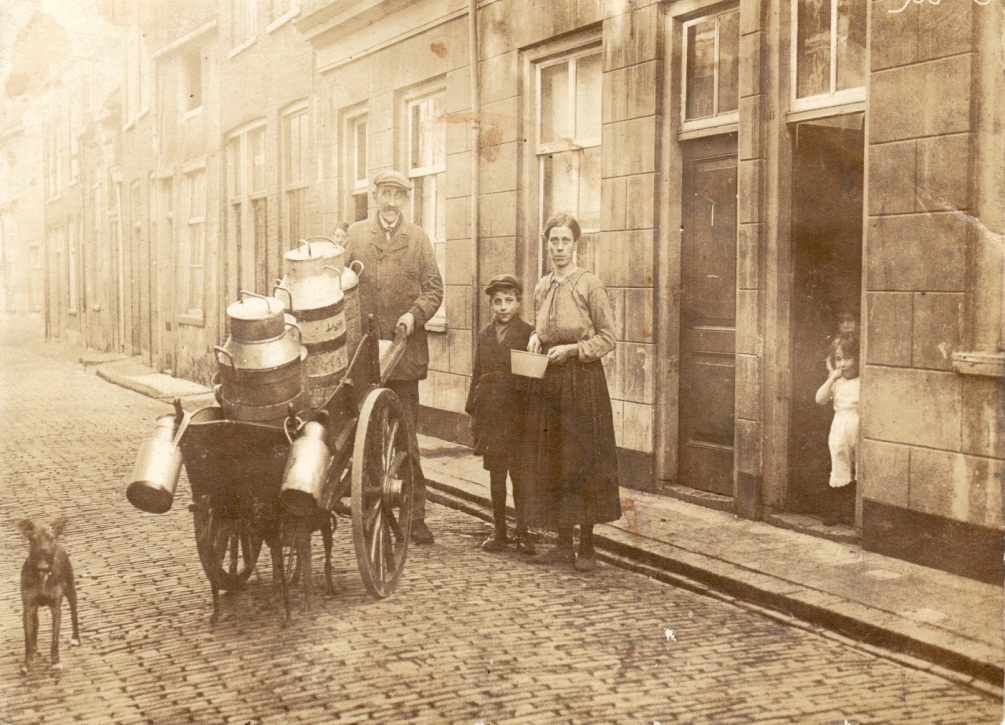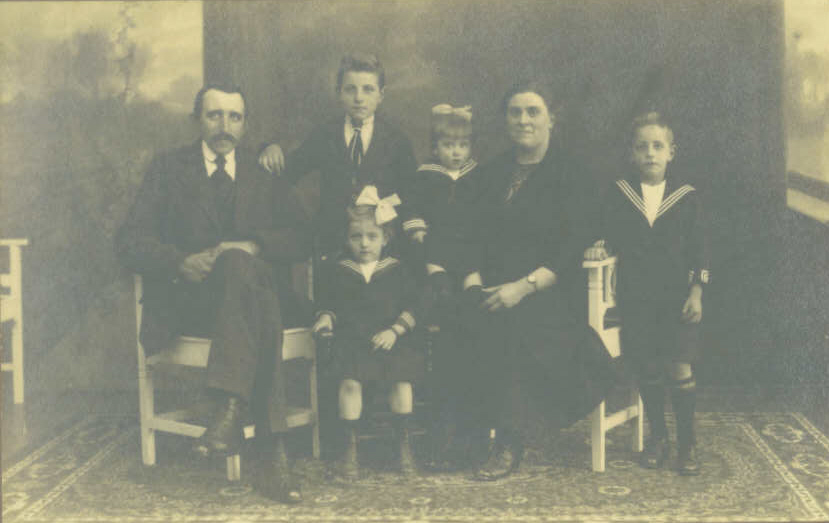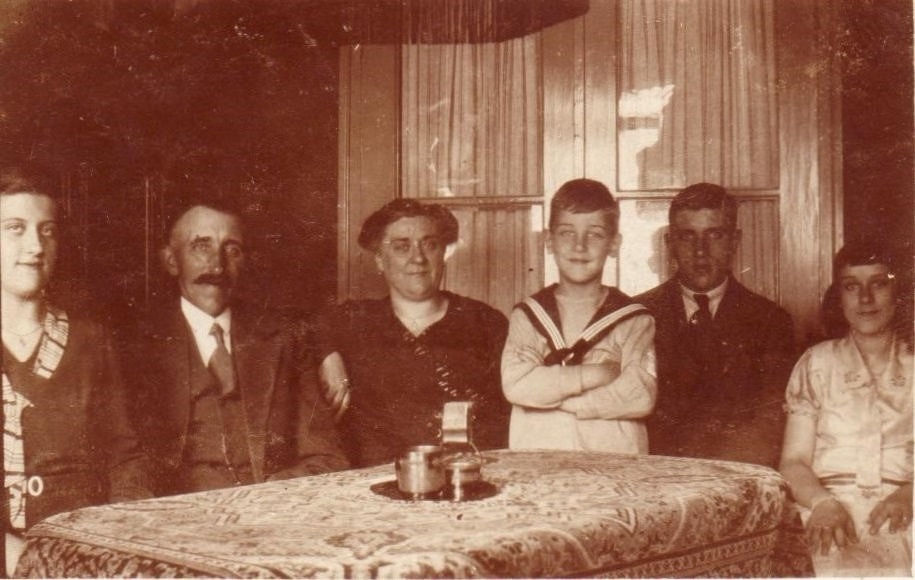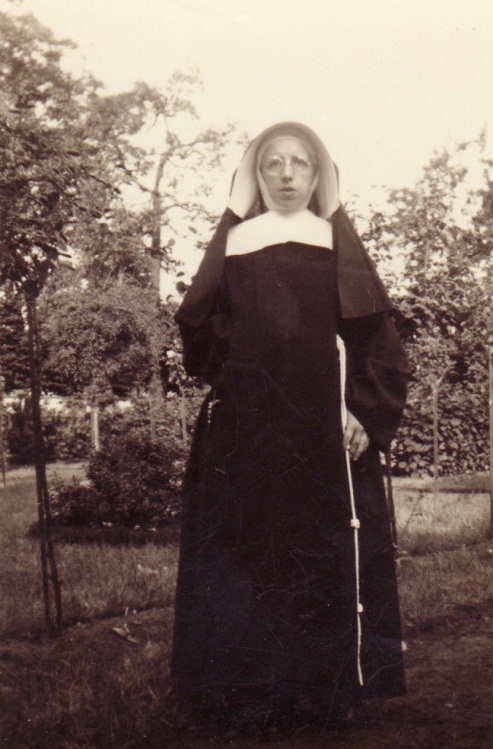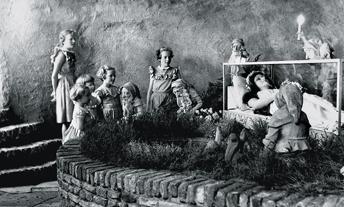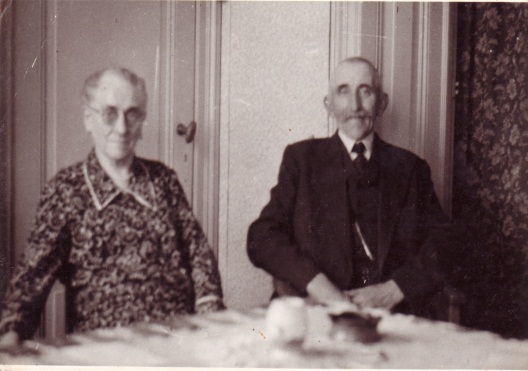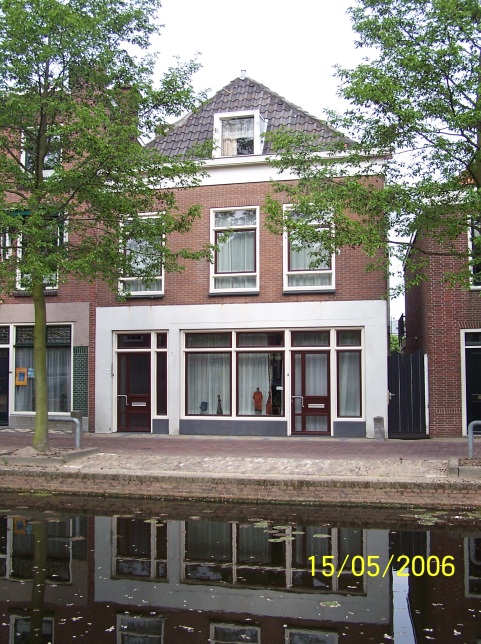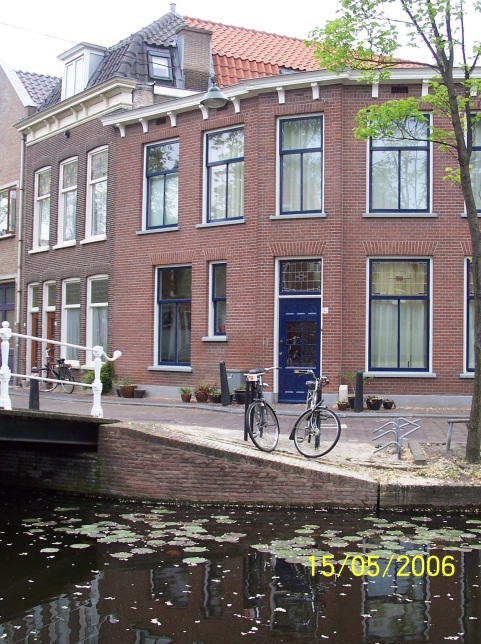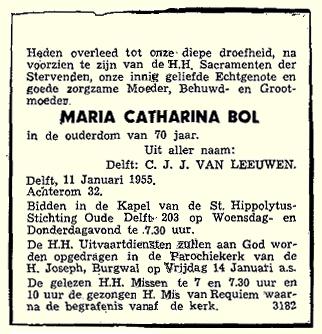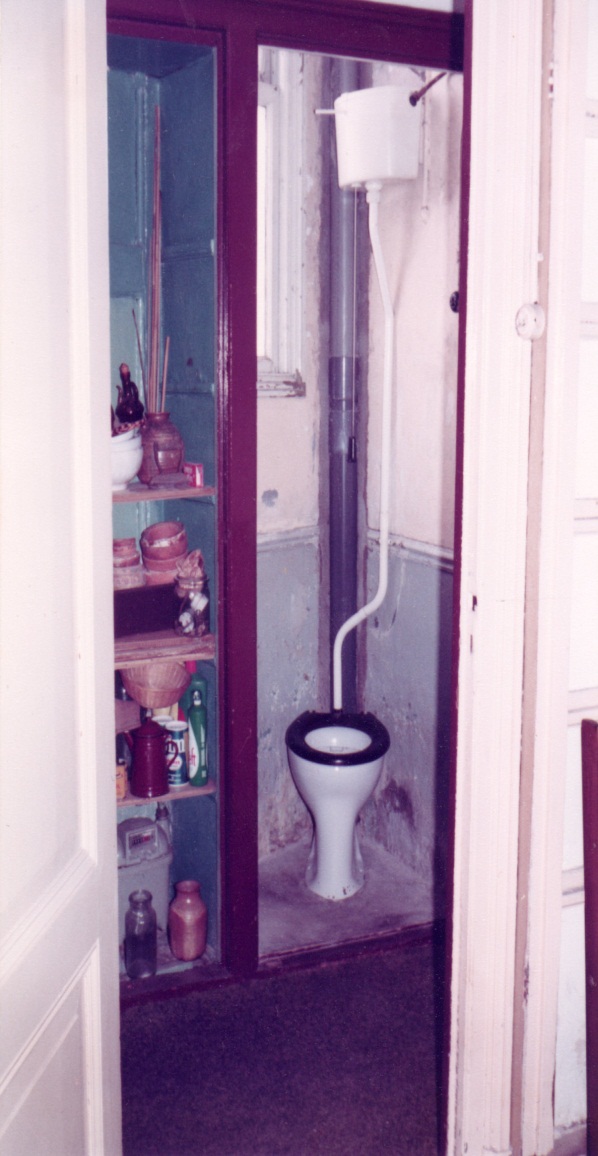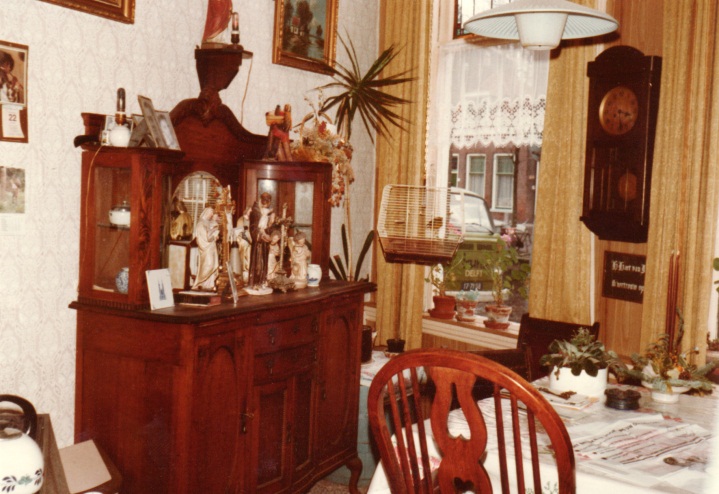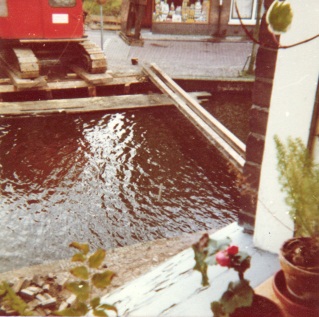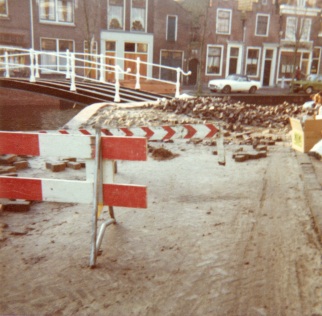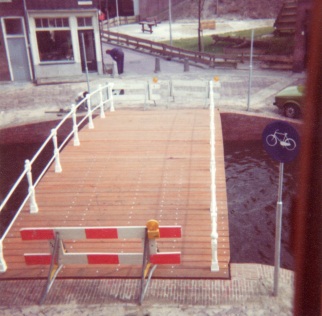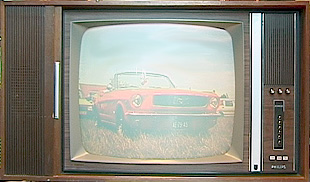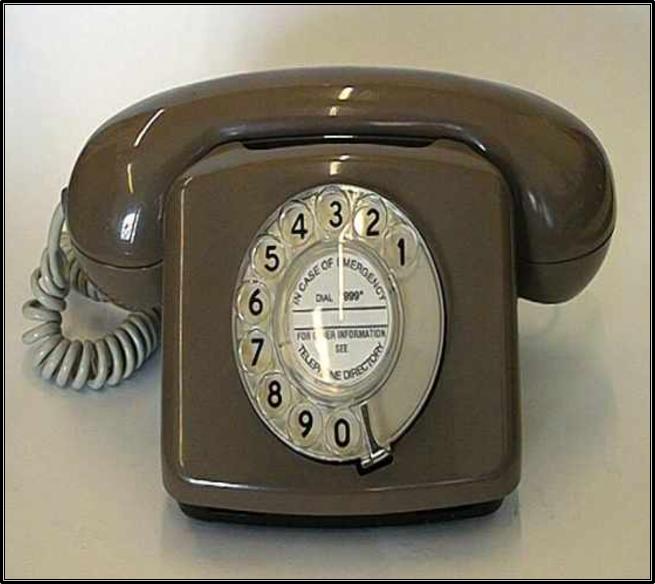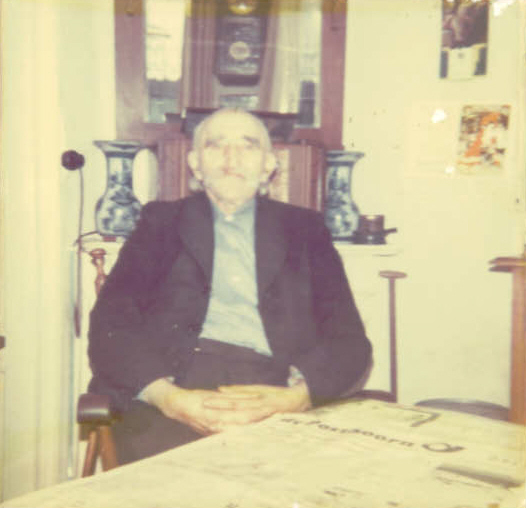Leeuwendeel
"Van Leeuwen" in de familie? / "Van Leeuwen" in the family?
Cor van Leeuwen 1885-1981
On 24 March 1885, in Delft Cornelis Johannes Josephus (Cor) van Leeuwen was born as the first son of Willebrordus Gerardus van Leeuwen and Cornelia Maria Meijer.
Cor is named after his grandfather. Who is also called Cornelis Johannes. (Cornelis Johannes van Wijk) His third name (Josephus), comes from another great grandfather also his third name. (Johan Gerard Joseph Meijer) They both are still alive at his birth.
Cor was born on the Achterom 143 in Delft. His whole life he will continue to live on the Achterom. Although he moved several times to another building, including the Achterom 7.
He is a happy man. He never grumbles and likes joking. He is quite religious. Every Sunday to the church. When the bells are ringing, he says: "Bim bam Cortje come", or if another is nearby, he mentions the name in scaled form of that person.
The Home Insurance Building in Chicago The Home Insurance Building in Chicago is opened in the same year. It has a whopping nine floors. Just not a skyscraper that was at that time by ten floors. It was designed by William Le Baron Jenney. He applies for the first time a complete steel skeleton. It is the basis for the skyscrapers, which today (in 2013) can count one hundred and sixty floors. The Home Insurance Building is built just after a great fire. This business center of the United States needs quickly new buildings. However, it suffers from high land prices. Since the techniques of building and knowledge of the materials have improved, it is obvious that they will build into the height.
Statue of Hugo Grotius The jurist who lived from 1583 until 1645 stands until this day (2013) still on its plinth on the marketplace. He has not always been in the same place. In 2007 he stands closer to the New Church than here in the picture.
Voting rights Also in the year 1885, thousands of people were going to The Hague in order to demonstrate there for voting rights. At that time, the fact is that only the male taxpayers may vote. How bigger the wealth someone has, how more taxes that person pays, how bigger the control. It's been for centuries like this. The leader of the action voting rights, Friedrich Wilhelm Gebing, speaks to the "National Popular Assembly". He said that he represented an enormous crowd and that the government is unwilling towards the right to vote. He even threatens, if their demands are not accepted , a revolution could happen.
And as we now know, their action had sense.
In the year 1887 there is a new constitution. It says that from now on everyone who is suitable, may choose. But what does that 'suitable' mean? This gives rise to a comprehensive political debate. It was immediately clear that women are not allowed to vote. This is explicitly stated in the Constitution.
In the year 1892 it's the Minister of the Interior, Tak, a proposal that all men who can read and write and not too poor, to give right to vote. This raises a lot of resistance. Minister Tak adapted thereto are proposal: the voter must have a permanent house. The majority of the politicians want more. For a studio apartment, all laborers are included. And that means that suddenly a large group of workers get voting rights, something the conservative politicians are against it. To address this issue resign Minister Tak.
In the year 1896 shall inform the electoral law that the term 'appropriate' depends on factors such as: tax, salary or pension, savings, rental value of your home and diplomas. In practice, this is a small increase in the number of voters gives. The suitability is only about fourteen percent of the adult population. Fourteen percent of the population has thus right to vote.
|
||||||||||||||||||||
King William III In the first years of Cors live, the Netherlands has a King. King William III died on 23 November 1890. His daughter Wilhelmina ascends the throne with her mother Queen Emma as regent. Wilhelmina had three half-brothers from a previous marriage of King William III, but all three were deceased before 1890. Wilhelmina is probably not biological daughter of the king. The king would have syphilis in his older ages and therefore he is probably infertile. As his biological father is then called Esquire S.M.S. de Ranitz, private secretary of Queen Emma. In itself this is not a problem for the succession, because Emma via her mother is a descendant of the daughter of Governor William IV, Carolina van Oranje-Nassau, and their descendants are still in the constitution of 1917 entitled to the Dutch throne. Since the death of King William III belongs Luxembourg no longer to the kingdom of the Netherlands. Netherlands got a queen. Queen Wilhelmina ascended the throne, but until her 18th year would her mother the regent, meaning that Wilhelmina barely or no control. On 7 February 1901 there is the marriage of Wilhelmina and Henry, son of Grand Duke Friedrich Franz II of Mecklenburg-Schwerin. In the beginning they have a happy marriage, but the first years they get four miscarriages. This results in unrest to some people, because when Wilhelmina will dies childless, the throne probably to a German. Men fears for more German influence or even annexation of the Netherlands. Luckily Juliana was born on 30 April 1909. In the Netherlands it is spontaneously celebrated. As devoted mother adores Wilhelmina her daughter and she spends many hours with her. She dresses and takes care of her child herself, rather than having a nanny to let. In the year 1980 does Juliana transferring the trone to her daughter Beatrix. Then Cor is still living.
|
||||||||||||||||||||
Drinkingwater and the watertower Delft. At the beginning of the 19th century the water from dirty canals. One discovers that defiled drinking water caused cholera and typhoid. Therefore, water pipe systems developed, which naturally purified water into clean areas (eg the dunes) are extracted. The water is directly pumped through pipes to the customers. It will take until 1887 for Delft the drinking water through a water pipe from the water tower in Monster gets. It soon becomes apparent that if the water have to come from Monster, sometimes the pressure falls away because the long distance. This was the reason to place a second reservoir. Just a moment they had considered to place this reservoir in the tower of the New Church. But they decided to build a watertower, on the former bastion of the Hague Poort where from 1829 to 1874 the cemetery was.
In the year 1896, the watertower is in operation. Cor will undoubtedly have seen the construction progressed. It has become a tower with an high altitude water reservoir of approximately 600,000 liters for the drinkwater supply. The 29 meter high tower was designed by municipal architect M.A.C. Hartman. The structure consists of brickwork and steel beams. The water is inside the cantilevered portion in a so-called Intze-II-reservoir: a riveted steel container (capacity 600 m³) with a double vaulted bottom, those with a ring shaped gutter on the tower body rests. The architecture is typical of the construction period: Neo-Renaissance. The romantic appearance, has something castle-like battlements, is enhanced by the beautiful location in the green.
The tower has barely changed since it was built. Only in 1908 is an intermediate floor a concrete floor and an iron spiral staircase fitted and the pump is placed outside the tower.
As a result of the increasing water consumption in the year 1918 near the tower clear-water reservoir (capacity 1900 m³) built in the park of the Kalverbos. The location of the basement is recognizable by the covered hill. Half of the reservoir, a pump building constructed, in which the regulation equipment is placed. The drinkwater was stored in clear water cellars, from there pumped to a high reservoir (usually a tower) and then via the drinkwater piping to the users to be transported. Therefore, the line pressure quite consistent and had one also has an emergency supply in case there could not be pumped.
In the year 1921 will Delft drinkwater also get from Rotterdam, where there has first an additional pumping station to be built. This improvised station is replaced by a new in the year 1972, when two clear water cellars of each 3000 m³ in Wippolder were put into service. The old watertower operates until the end of the year 1996. It is still there as a monument.
Inventions of the beginning of the twentieth century. In the year 1901 appears the vacuum cleaner for the first time at the market. He weighs 50 kg and makes a so much noise that when it drawn in, outside the horses stampede. In 1907 the thing improved. It weighs only 20 kg! The next major advance in 1920, the throw away bag. However, it will take until 1939 for the vacuum cleaner first appeared in the household.
In the year 1903 are the Wright brothers the first in history who make a flight with a self-built aircraft. They succeeds to design a device that may remain in the air a few seconds.
In the year 1907 invented the wristwatch. This is the first sign that the concept of time would become more important. |
||||||||||||||||||||
|
||||||||||||||||||||
|
The business
How Cor the business started I do not know, but when we look at what tools he has to deliver the products, we know pretty sure that he started with a handcart which he later replaced by a dogcar. The dog in the photo is probably from Cor.
Cors salary is in the year 1917 950 guilders a year. This seems to us, almost a century later, very little. Yet it is for that time a regular salary. He belongs to the group of people with a modal income.
Cor marries Marie. On 17 January 1912 Cor married on Civil Status of Delft to Maria Catharina (Marie) Bol (born 10 January 1885 in The Hague nowadays Loosduinen), daughter of Adrianus Bol and Apolonia Kortekaas. He is 27 years old and she is just 28 years young.
The first children in the family. In that same year the production line invented. This is the beginning of the mass production. Soon there will be milk bottles from the production line.
On 15 June 1915 a son was born in Delft. They call him, Adrian Simon Francis. Unfortunately, he does not live long, because after about 10 months he dies in Delft on 30 April 1916. At that time it is sometimes common to give a first name often within a family. Thus on 26 September 1917 in Delft their third son was born. He is named Adrianus too. His full name is Adrianus Jacobus Franciscus.
Voters List On 22 March 1919 there is a voters list for the city of Delft prepared for the period 1919-1920. It shows only men aged 25 and older with the Dutch nationality and comply with the Electoral Law of 1896. In the year 1943 the required age 23 years, in 1963 this will change in 21 years, in 1972 to finally come out on 18 years. And so it is today. The list includes more information. There are beyond the name, the date and place of birth and the address where they live per 1 February 1919. Also Cor is on the list. According to this list, he may vote for the room, the states (say province) and the city council. In order for the council to vote you must already have some time living in the city. He was assigned to the constituency 8 for the room, 5 for the states and I for the council. The stemdistrict for all three constituencies same. The number of the stemdistrict which belongs to Cor is 2. Everyone also has a tracking number. The number of Cor is 4672.
|
||||||||||||||||||||
|
||||||||||||||||||||
|
The rest of their children are born. On 1 August 1919 in Delft Cors first daughter was born, they call her Cornelia Apolonia Johanna Francina. His second daughter, Apolonia Johanna Josephina Francisca (Paula), was born in Delft on 14 March 1921. It is 23 June 1927, Cor is 43 years, when his wife Marie gives birth their last child. In Delft, their fourth son Gerardus Theodorus Antonius (Gerard) was born. In total gets Cor 6 children, 2 daughters and 4 sons, 1 son has not even a year become.
The business 50 years. In July 1933 and his father Cornelis celebrate the 50th year anniversary of the business. It would have been a nice shop, because the family was very hospitality. When you visit you will always drink. The children were given lemonade, made from syrup with water. Cor is a pleasant conversationalist. He has a special way of talking. He talks slowly and clearly. When he wants something to say to his son William, then he says so: "Say wim ..." and then follows a short silence, then he continues. It seems as if he waits until he has the full attention. And do not enter the city and bring your bike in the bicycle of William the Red Beestenmarkt in Delft, a cafe where you used to be your horse could stables. Cor is not happy and Marie is not to talk about. They say: "Put your bike by us, which will save you another 10 cents off." But the business is bigger. There are also stables, a milk room where the cows are milked and a cesspool. On his field he has 2 large dogs.
The Second World War May 1940, Cor have to milk his cows. He is not allowed te enter his country, because there are flying German planes which are dropping paratroopers. The Dutch soldiers shooting at them. Nevertheless enters Cor his country and goes with danger for his life to work.
From May 1940 until January 1942 Cors cousin Corry Vieveen works with him in the store. She is 13 years old when she starts. This may be because you're compulsory school age to 12 years. Nowadays it to your 17th year. She doesn't only work there , but she lives in there too. When the war breaks out, waits Cor a day. Then says Cor against his cousin Corry and his daughter Paula: "Tell uncle Nelis: Mute in the hayloft." In "Leeuwendeel 2005" is writen the story that his son Wim who has to dress himself like a women to be come safe on the farm of Cor. On the orders of Adolf Hitler, all men, aged 18 years and older, to report to work for the Germans. So his son Gerard was also at Cor brought to safety.
Later in the war the Germans claim his horse and wagon to go to The Hague. This means that he has lost them. Cor doesn't give it away. He offers to them to bring them to The Hague. So he can keep his horse and wagon.
In Rozendaal on 31 December 1944, Cors eldest sister Catharina Maria (Ca) van Leeuwen is after a long illness deceased. Because of the war, the family has not heard about it. After the war they get that, by visiting her monastery.
Yet in the middle of war, but probably with good hopes of a quick end thereof, married the 26-year-old Cornelia on 10 January 1945 for civil status of Delft with the 27-year-old Simon Leonard Paap. What no one can say for sure is that the end of the Second World War is coming.
The years after the War After World War comes a time in which the Netherlands as well as might be possible, build a new future. Also Cor has contributed. Though it is only providing the necessary dairy products. He will probably have done more, but that is not known to me.
Paula, Cors youngest daughter, married on 12 June 1946 in Delft, Gerard Meijer Fredericus. In this year is also the microwave invented. It will take more than forty years before this many people in the household no longer be ignored.
The 50s In the year 1950, about 17 percent of the population has a bathtub or shower. Mostly the children will on Saturday in the living room in a basin. The water is not even refreshed by the children after the first child to be washed. In fine weather the children are sometimes washed outside. This results sometimes in a water ballet. For what could be more fun than just a brother wet spraying with cold water?
In the 50s, it is, according to a newspaper of that time, cautiously eat. For many people this means that they mostly eat sandwiches with contentment. Sandwiches without filling so. Further they ate floury potatoes with gravy and well boiled vegetables. Macaroni with diced luncheon meat and tomato ketchup was for many already bold.
There is little traffic at this time. In the Netherlands there are around 139,000 cars in 1950. Children can play in the street careless. In spring there is much knocked, then prick- and whip tops and girls play bouncing balls. In winter were able sometimes days long snowball fighting.
A business like Cors, isn't unique. At that time, it is quite common that a milkman, a greengrocer, a bakery or a petroleumman at the door. Walk through the streets a voddenboer with a loud voice to old clothes or skins or other substances calls. The milk can not long be preserved, so especially in warm weather, the milk must be cooked quickly otherwise it is acid.
"The Efteling" Where "De Efteling" is now, there was in the year 1933 a sports park with a playground. In 1936 there is a playground and finally in 1950 the Efteling Nature Park Foundation was established.
Emigration to Australia. After the liberation of the Netherlands, people started to publicly talk about emigration to Australia. That is not surprising, because those were not easy times. In the year 1952 has also Cors daughter Paula a family with two sons. Jack is three years and Kees is six months old. Her husband Gerardus Fredericus (Gerard) Meijer has a grocery store. Previously he was employed by another greengrocer and a grocery. His compulsory military service he fulfill on Ockenburg airport. During the war he was a gardeners servant until the Germans took him prisoner. After the war he began for the third time his own grocery store, but in 1950 they noted that the vegetables trade deteriorates. The family has the idea that they should go somewhere else for a new life. They follow the Dutch who had previously emigrated to Australia. Australia is a country that is far away. It takes five weeks before they arrive. In a southern suburb of Melbourne, Port Philip Bay, they find a beautiful old house in a neighborhood where most homes a servant opens the door. Gerard has found a job in a hospital near home.
When Paula is walking with the stroller, everyone stares at her. Is not she dressed civilized? They dress like the people there. But a few weeks later, still everyone looks at them. They ask someone why people look so. The answer is that everyone knows that they come from the Netherlands and that they expect from Dutch people they ware traditional Dutch clothing. There are more strange situations, but it goes a bit too far when I go here to mention all. All those rarities remain at her, because much later she writes everything and win a big prize. She comes over to the Netherlands, that she misses so, to just has holidays. Once in the Netherlands she misses the space they have in Australia. No, return to live in the Netherlands she does not want it anymore. But she still like it as a holiday country. |
||||||||||||||||||||
The discovery of the DNA. In the year 1953, Francis Crick, an American, "the secret of life". What he actually discovered, is DNA. A spiral staircase with all genetic elements. It is a great find, because from that moment the medical science this deposit. Causes of various ailments and diseases will be found here. And once the cause is found, then the solution will also come.
No quiet times. The Second World War may some years behind us, but there breaks down no quiet time. What about the so-called "cold war"? The United States is opposed to the Soviet Union in such a way that it has a sphere like there every time could break out a new world war. If this happens, then would be this the end of the earth.
Also the Netherlands are still struggling with their own colonial past. Take for example the independent Indonesia. How do we deal with that?
Or what about the flood in February 1953? On 1 June 1953 the family moved from Achterom 143 to the other side of the water, Achterom 32.
A few months later marries Gerard, the youngest of the family and the last who still lives at home, in Delft on 2 September 1953, Catharina Anna Helena Sassen born in De Rijp on 7 January 1932. Also this newspaper cutting here at the left side I want to show you of course. They get together four daughters.
Cor Mustache In the family Vieveen have two uncles the callsign Cor. For our Cor does it mean that he is called Moustache Uncle Cor. As the nickname suggests, it is because he has a big mustache. Their other Uncle Cor is Cor van Zon. He owns a laundry.
Marie dies On 11 January 1955 dies, one day after her birthday, his wife Marie.
Marie was a real housewife, which is very common in those days. She ran the household and cared for the food. This has become clear from the fact that Cor after her death, as long as he can, he comes to his children to eat every day. That goes about by rotating. One week at his son Gerard the other week with his daughter Corry (who he also called sister). On Sunday he goes to his son Wim. He cycles there and eat with him, then he goes home. When he leaves, he says in Dutch: "Dag mammaatje dag pappaatje." That means: "Bye mom bye dad." When Cor can not come , then come the children come to bring the food. I suspect by this stories that Cor has never learned to cook.
The 60s In the year 1960 there are 376 million people living in Europe. In the Netherlands there are over 11 million. In the year 2000 in Europe, just of comparison, no less than 450 million inhabitants, of which almost 16 million in the Netherlands. In 2005 we have in Europe even at almost 460 million inhabitants in the Netherlands already more than 16 million.
In the 60s, his son Gerard took over the business. Cor continues to help him. At that time, it is difficult to get water. Cors grandchildren are sent out to get water on the Broekmolenweg. They should be there for a long time in a row.
Cors clothing is washed with Laundry Koot. The laundry is owned by a family member. Cor is a man with big hands, big ears, big mustache and large eyebrows. He let his hair and his mustache keeping a barber in the neighborhood. He goes there with the bike. Even when he can not bike, he takes the bike with him. Which he uses as a walking stick.
Chewing tobacco Nowadays (2013) chewing tobacco is rarely used these in the Netherlands, but worldwide is still very much chewed although in a slightly different form. Chewing tobacco is caused by with chewed at locations where no fire should be used. Cor uses this against toothache. He won't and / or hasn't time to go to the dentist. A (half-) annual check is not common in his time and is even seen as a luxury. Cor regularly smokes pipe or cigar, but also he likes smoking a cigarette.
The rollator Cor has always done a lot for the family. He is not very technical, but gladly his son in law is. Thus Siem Paap doing much in the life of Cor. To give an example: in de 60's, he has put small wheels under the seat of Cor. They were so small that not everyone realizes that they are under. Those wheels gives Cor the ability to undertake still propel somewhat.In 1980 is invented also in Sweden the first rollator. Cor would probably have loved it, because he has a selfmade rollator for already a long time. An armchair with wheels. When he had known how many were sold in the course of time, he would perhaps have done more with the invention. This walk chair, which it is in his case, is going anywhere wher he goos. Siem Paap often drives a bus.
Progress Cor has no need for progress in technology. He has a waterworks, but there is no hot water. A fridge is not necessary to him. He keeps his goods in a cellar. But when there finally a piece of technology comes in the house, he uses it gladly. Take the television. There are only two television stations: Nederland 1 and Nederland 2. He goes to bed at 19 hours, from there he has a view of the television which always on the same channel. Which it is I do not know. In the beginning he operates the television with his cane. Later he uses a lightswitch to switch the TV on or off. The voice of the television must always be loud, because he has not a hearing aid. Further, he has a two burner gas cooker. On this he cooks every morning the water to make coffee of it. The coffeepot, with a spout like a trunk, goes then on the stove to use it the whole day. He drinks the coffee through the spout of the coffeepot.
He has his cane always around and that is not just for walking or the TV. He also uses it instead of a baseball bat. Because what our Cor doesn't like, is to keep up with the changing times. The time is slowly but surely harder. It is increasingly burgled. So it's so slowly but surely time that the lock on the front door shall be replaced. Until now, you can open the door with a master key. But it is often easier, you can open the door through a window.
When you enter the house of Cor, you're standing in a hallway with five doors. They are from the toilet, cupboard, the stairs, the kitchen and the living room. In the middle of the living room there is a table. Cor is usually in the middle of the table. At a given moment there will be a bridge in front of his front door. What he thinks about it, I do not know, but he prefers a different place at the table. He moves to the head down. That way he can see who's over the bridge. When you have sense about it, you see in a corner of the room a chamber pot chair. When we're talking about the furnishing, then you must mention the toilet also. When you want to use his toilet, then the door has to remain open, otherwise you can't sit decently on the pot, so small is the toilet space. |
||||||||||||||||||||
|
|
|
|
Building of the bridge in front of the door. |
||
Good food
Cor loves good food. Even without teeth he yearns to a plaice or herrings to sneeze at. He eats them even with the bones in there. Everything has to be eaten. So after a party, he will gladly eat all what's left. Beers, an eggnog, everything goes into. His food is often left on his large mustache and usually also on his clothes. His clothes has thus usually stains.
Grandchildren
In the 60s also the grandchildren get children. Cor likes it very much when they will come up. He can enjoy it as he sees them. Through them he is called "old grandpa van Leeuwen" or "grandpa grandpa".
In the year 1962 Cor will be 77 years old. He says that he had has reached the age of two little hatchet. Eleven years later is it two pretzels.
When the grandchildren (of the family Paap) do their Holy Communion, is Cor with them to celebrate it. This is something that he is very fine and important. Cor has always had a soft spot for children. Grandchildren get then also something to drink. If it's not lemonade, then it is usually chocolate.
Granddaughter Beb Paap fills with Cor the oil stove. The oil was not quickly enough in the stove. Cor doing some oil in the stove and wants it stabbing with a newspaper and a match. With the result that a blowtorch follows. Then his big eyebrow was on fire.
When it rains and you say to Cor: "What a weather." Then Cor says: "Most falls alongside and when you get so much rain as I got, then you still have a lot."
|
|
A color television of the ‘70s
|
Color television
In December 1967, there is for the first time a television broadcast made. A color television costs about 3000 guilders, a considerable sum for the time. The increasing prosperity in the 60s were a lot of families buy a television. Finally no longer need to guess what color the clothes of the people who appear on television would have and if the decor is the color which is thought to have. In the same year was also the first nudity on television.
Cor in the mud ditch
On 29 November 1962 married Anna Helena (their) and Johannes Cornelis van Eijk (Jan) Vieveen. at their home come A few uncles and aunts to congratulate. Gerrit van Zon, of the Kloosterkade, brings his parents and Cor Mustache to Jans parental home at the Vlaardingsekade. Siem Paap will bring the family back later. But Cor wants always see everything in the area or what has changed. The Vlaardingsekade is narrow, so they should walk a bit. Cor looks aside, leaving him at a loss and gets of the embankment in the all that mud on ditch rolls. Once back on the side, he says Gerrit:'' I go right back with you!'' But Gerrit says: "No way! With all that mud on your ass, you won't go back in my car. You first, go to Aunt Marie (mother of Jan and sister of Cor) you wash yourself and put on clean clothes!" Cor is very angry at himself! Through his prudish upbringing he does not want his sister washes his back. But father Vieveen says: "Are you cheated, you let wash your back through your sister and get clean clothes from me!" Under protest, he was washed through his sister. His back is clean and it will become a pleasant afternoon and they are always there to laugh. Later, his sister has him sometimes still teased: "So Cor, you let wash your back through your little sister."
The 70s
Cor has open legs and he even couldn't step on his bike. He tries a quarter long. It is in this period that he go to the hospital. He finds it terribly, because he hates hospitals. He has lost his wife and sons in the hospital. In addition, he doesn't like the food there. At home he eats sandwiches of two inches thick, covered with cheese, sausage or egg.
The death of Wim and Gerard
After about half a year illness, dies in Delft his eldest son Wim on 5 November 1973. From the St. Hippolytus chapel, Wim buried. Wim has not aged over 60 years.
A few months later Cors last remaining son Gerard in the chest stabbed with a knife. He dies on 10 February 1974 in the Hyppolytushospital in Delft. With this has Cor all four of his sons survived.
|
|
A telephone of the 70's |
The portable phone.
In Sweden in 1979 is invented the portable phone. (Not to be confused with the mobile phone of today, the coverage was not much further than from the house where a base station is.) But it is no longer bound by the length of the telephone cable. Finally you can talk to someone, who on the other side of the world, while you effortlessly walk through the house. The turntable that works on pulses and a rattling sound indicates by each dialing number is increasingly being replaced by push buttons which a pulse tone (say a beep) to indicate a number.
Cor has, despite his age, never a portable phone.
|
|
Cor van Leeuwen 1885 - 1981 |
Cors end approaches.
At the end of his life he must cared for. These took mainly his children and their spouses (and there's children) to themselves. His grandchildren don't like allways to bring the food. This means that they have to walk with a pot of food to their grandfather and then wait until the food runs out. Cor is happy to talk about his past and when you already have little sense to go there, you'll won't hear always those stories. Cor would be grateful for the care he receives. He has actually always a tin of biscuits. And sometimes happens that the cookies are old. Some of the grandchildren noticed that and take it in future the smallest cookie. On what Cor says that she can have a other one. When you get bored and slowly shuffles to the door, it's still not easy to get away with Grandpa. But once you reach the door, you can if you're lucky shout loud a quick "Hi Grandpa!" and run away. But there are also grandchildren who like to listen to stories of the past.
For a long time there live students above Cor. Actually he has little contact with them. After this time, goos Wil Paap live above him. The first thing that must happen is the entire upper floor renovate. When the renovation is over, Cor come take a look too, how his granddaughter (and new upstairs neighbor) goes to live.
It's a great wish to Cor, don't need a care home. He won't become 100, because then the mayor visits and he finds that nonsense and unnecessary. Cor is weaker and the family takes it upon themselves to put Cor everyday right in his chair. Cor always wanted to get the age of two pretzels, so 88. He has far surpassed.
At the end of his life, needs Cor even help for comming in and out of bed. Cor is a religious man. In his last days he says on a sunny day: "The sun is shining and I feel wetness." He insists that after his death a prayer card made. Eventually he will die of fluid behind his lungs. He dies in Delft on 27 September 1981. He is 96 years old. He is buried in the cemetery Iepenhof in Delft. This cemetery was once his own land to the Delfgouwseweg.
